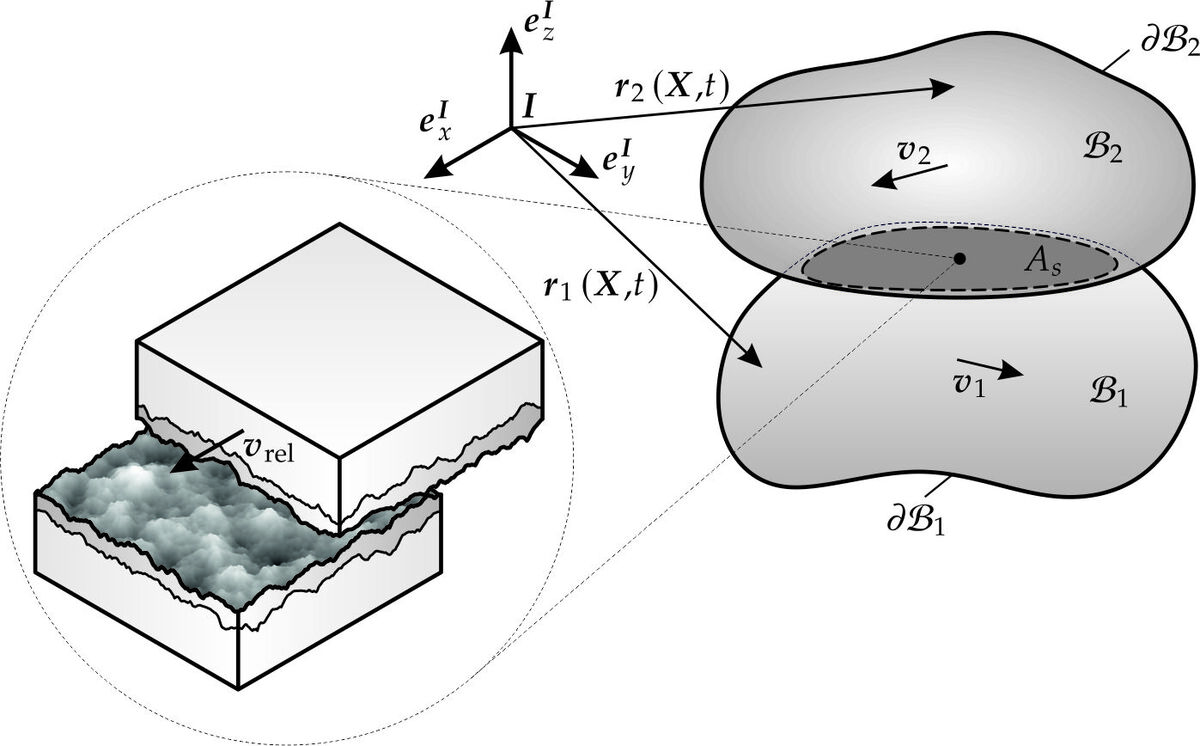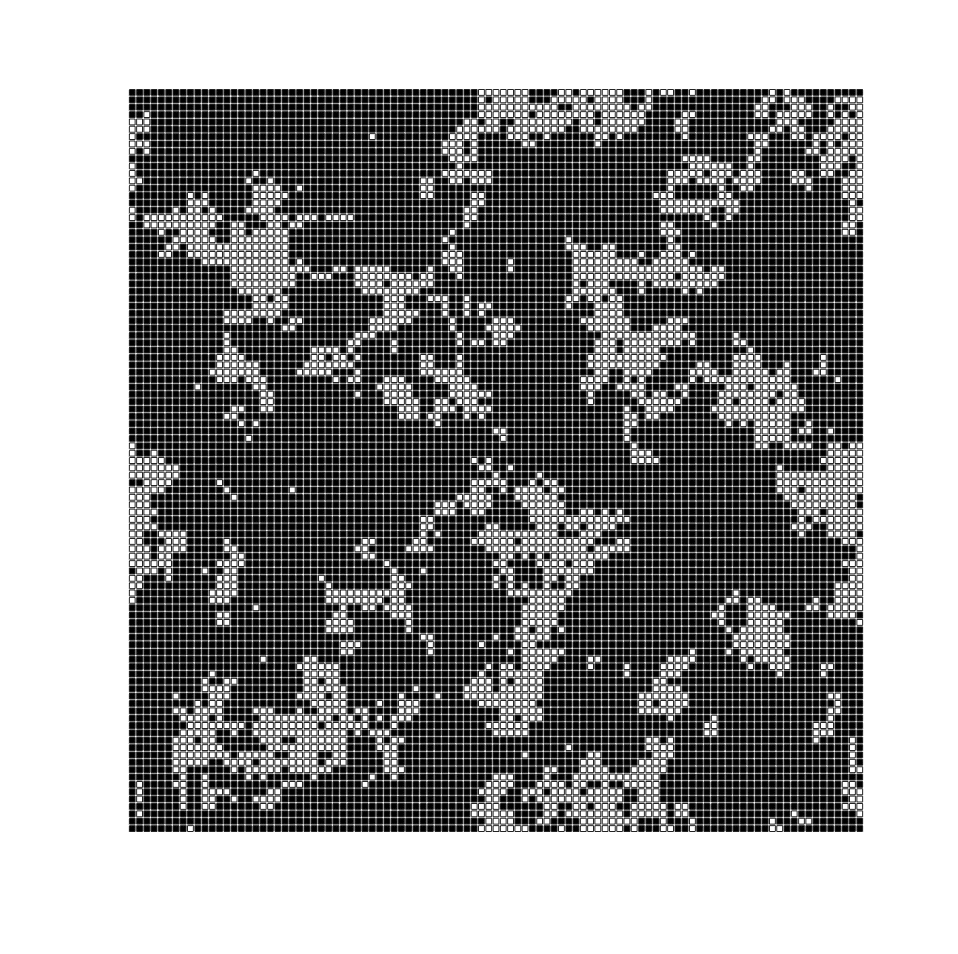Dr.-Ing. Lukas Oestringer
- Raum: 207
- Tel.: +49 721 608-41902
- Fax: +49 721 608-46070
- lukas oestringer ∂does-not-exist.kit edu
Postanschrift:
Karlsruher Institut für Technologie
Institut für Technische Mechanik
Teilinstitut Dynamik/Mechatronik
Postfach 6980
76049 Karlsruhe
Haus- und Lieferanschrift:
KIT-Campus Süd
Institut für Technische Mechanik
Teilinstitut Dynamik/Mechatronik
Geb. 10.23, 2.OG
Kaiserstraße 10
76131 Karlsruhe
Contact Mechanics and Stochastic Dynamics
Systems with friction are widespread in all kinds of applications. Unfortunatelly the precise simulative prediction of the resulting friction force in frictional contacts is still an unsolved task which has led to the developement of many empirical friction laws. Despite their great value for many practical and theoretical applications, a deeper insight into the actual contact situation and the corresponding friction force with its dependencies is necessary to improve technical systems e.g. with regard to energy efficiency and wear.
Early works on this topic by Greenwood & Williamson and Archard for the purely elastic and Bowden & Tabor for the purely plastic deformation case have at least led to a justification for Coulombs friction law. Their research efforts indicate that the real contact area is almost proportional to the normal contact force whereat this relation can be attributed to surface roughness in both load cases. By the additional assumption that the friction force is proportional to the real contact area Coulombs friction law can be justified.
Further investigations on the dry contact of two sliding metallic bodies depending on various physical parameters and sliding speed are performed. For this purpose, a thermomechanical model is developed and evaluated for different contact configurations considering the surface roughness of both contact bodies in particular. Subsequent investigations on the consequences of the calculated friction coefficient in the context of friction-induced vibrations are carried out.
Contact: Prof. C. Proppe, L. Oestringer
Publikationen
Oestringer, L. J.
2023, April 24. Karlsruher Institut für Technologie (KIT). doi:10.5445/IR/1000158060
Oestringer, L. J.; Proppe, C.
2023. Mechanics of Materials, 177, Artkl.Nr.: 104554. doi:10.1016/j.mechmat.2022.104554
Oestringer, L. J.; Proppe, C.
2022. Tribology International, 170, Art.-Nr.: 107425. doi:10.1016/j.triboint.2021.107425
Oestringer, L. J.; Proppe, C.
2021. Proceedings in applied mathematics and mechanics, 21 (1), e202100013. doi:10.1002/pamm.202100013
Oestringer, L. J.; Proppe, C.
2019. Proceedings in applied mathematics and mechanics, 19 (1), Article: e201900407. doi:10.1002/pamm.201900407
Kapelke, S.; Oestringer, L. J.; Seemann, W.
2017. Proceedings in applied mathematics and mechanics, 17 (1), 375–376. doi:10.1002/pamm.201710157
| Titel | Typ | Bearbeiter |
|---|---|---|
| Implementierung der homogenisierten Reynoldsgleichung für die Berechnung der Kontaktkräfte beim einseitig rauen Schmierspalt | Bachelorarbeit | Christian Becker |
| Homogenisierung und numerische Implementierung der Reynolds-Gleichung für einen zweiseitig rauen Schmierspalt | Masterarbeit | Manmit Padhy |
| Einfluss von Leistungs- und Verteilungsdichte trockener Reibwerte auf die Stabilität eines Reibschwingers | Masterarbeit | Philipp Sekol |
| Nicht-äquidistante Diskretisierungen in der numerischen Kontaktmechanik am Beispiel des partiellen Gleitens | Masterarbeit | Leon Winheim |
Betreute Lehrveranstaltungen
↵
| SS 22 | Workshop 'Arbeitstechniken im Maschinebau' |
| WS 21/22 | Übungen zu Mathematische Methoden der Dynamik |
| SS 21 | Workshop 'Arbeitstechniken im Maschinenbau' |
| WS 20/21 | Übungen zu Mathematische Methoden der Dynamik |
| SS 20 | Workshop 'Arbeitstechniken im Maschinenbau' |
| WS 19/20 | Übungen zu Mathematische Methoden der Dynamik |
| WS 19/20 | Machine Dynamics II |
| SS 19 | Workshop 'Arbeitstechniken im Maschinenbau' |
| SS 19 | Rechnergestützte Fahrzeugdynamik |
| WS 18/19 | Exercises to Modeling and Simulation |
| WS 18/19 | Machine Dynamics II |
| SS 18 | Workshop 'Arbeitstechniken im Maschinenbau' |
| WS 17/18 | Übungen zu Modellbildung und Simulation |


